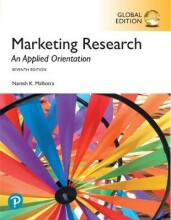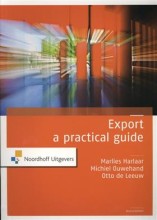A brief history of organizational theory
20 important questions on A brief history of organizational theory
Explain the main idea ofAdam Smith regarding economic efficiency
Explain the main idea of Karl Marx regarding economic efficiency
His ideas about labor and capitalism inspired critical theory
What is the connection between Emile Durkheim and Adam Smith?
- Higher grades + faster learning
- Never study anything twice
- 100% sure, 100% understanding
Max Weber introduced the idea that societies organized themselves using different authorities before and after the industrial revolution. Which 3 different authorities?
Charismatic authority (pre-industrial)
Rational-legal authority (after industrialization)
Explain the concept of traditional authority
Explain the concept of charismatic authority
Explain the concept of rational-legal authority
Weber additionally introduced the theory of bureaucracy as an ideal model for governing organizations and societies. But why did he fear bureaucracy?
Weber makes the distinction between two different rationalizes, which two?
Substantive rationality : takes the desired end of an action into account when assessing the effectiveness of an organization. Substantive rationality stops formal rationality from creating an iron cage.
The modern perspective on organizations focusing on the ideals of progress and rationality (when people base their actions on facts ipv opinions.
3 theories support these ideals, which 3?
2) The socio-technical systems theory
3) The contingency theory
Explain the socio-technical systems theory
What is the primary theory of interest from the symbolic perspective?
What is a symbol?
Social construction operates through three mechanisms, which 3?
2) Objectification: making something an object
3) Internalization: accepting the inter subjectively externalized and objectified understandings of a social group as reality
This three mechanisms are ongoing within the social construction process that produces stability.
How do symbolists see the connection between stability and change regarding symbols?
Explain the enactment theory (one of the three phenomena within the symbolic perspective)
Therefore, organizations are fictions that are created by members
The theory argues that the process of organizing should be of primary interest, as opposed to the organizations.
The theory combines the concept of externalization and objectification to create the new cognitive process of reification - when something is made real (which is what humans are doing to organizations by making cognitive maps
Explain the concept of institutions and institutionalization.
(one of the three phenomena in the symbolic perspective)
Institutionalization is what you present as understanding and how this understanding is created.
An institution can become indispensable to society and hence be institutionalized, by asserting its value through symbols.
If an institution has social legitimacy, their behavior can diverge from rational expectations and the institution can still exist based on the justification of social legitimacy.
Therefore, the irrational behavior of organizations is hidden from public view and an institutional myth is created instead.
Explain the concept of culture
(one of the three phenomena in the symbolic perspective)
A method that the symbolic perspective use if to research culture is thick description; a variation of traditional ethnography. Thick description focuses on meanings that are beneath the surface of everyday events that reveal culture and its operations. The description is created through detailed description and careful documentation and presents the researchers observations and interpretations regarding the culture.
Research as storytelling and narrative.
All scientific writing is an act of storytelling and there are three styles of storytelling, which 3?
2)confessional tales: a text in which the author is very much present
3)Impressionist tales: highly personal accounts
Explain the following two concepts: narrative perspective and narrative voice.
Narrative voice: concerns the extent to which the narrator writes themselves into their narrative.
The question on the page originate from the summary of the following study material:
- A unique study and practice tool
- Never study anything twice again
- Get the grades you hope for
- 100% sure, 100% understanding






























